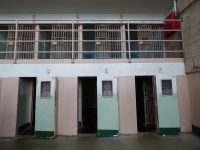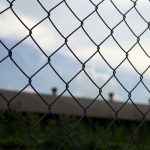Queensland’s First ‘Training Prison’ to Open in 2016

Recent years have seen an increased focus on sending people to prison as punishment, rather than for rehabilitation.
Unfortunately, the steep rise in prison rates means that more often than not, inmates are unable to access the limited support and training services on offer. They may even have to wait years before accessing court-mandated rehabilitation services, or valuable employment and training programs.
As discussed in some of our previous blogs, this can compromise their prospects of being released on parole following the completion of their non-parole period – which can contribute to overcrowding and compound the problem.
In an attempt to address these issues and promote rehabilitation, the Queensland Government has announced the opening of the state’s first training prison.
New Prison to Provide ‘Meaningful Opportunities’
The Borallon Correctional Centre operated between 2007 and 2012 near Ipswich in south-east Queensland, with a capacity of 492 inmates at any one time.
Despite receiving numerous accreditations, it was eventually decommissioned after the opening of the Southern Queensland Correctional Centre.
But with prisons across the state packed to the rafters, the Queensland Government has announced that it will reopen the facility in 2016 – with several major differences.
A media statement released by Minister for Corrective Services Jo-Ann Miller states that
‘The Centre will partner with local community providers to offer leading employment, training and reintegration programs to get young prisoners lives back on track and break the cycle of crime.’
The statement refers to statistics suggesting that less than 15% of inmates under the age of 21 ended up finishing Year 12. It promises that the recommissioned prison will ‘focus on curbing harmful behaviours while providing meaningful opportunities for young prisoners to improve themselves and increase their chances of getting a job.’
The facility’s focus on breaking the cycle of re-offending has led it to be dubbed the state’s first ‘training prison.’
Borallon will be based upon an ‘earn or learn’ philosophy – each of the facility’s 492 male prisoners aged between 18 and 30 will be required to complete high school, learn a trade, or engage in some other type of training which will assist them reintegrate back into the community.
The state government has budgeted $145.3 million over four years for the facility, plus an additional $8.1 million to complete the re-commissioning in time for its 2016 opening.
Rehabilitative Measures in Other Prisons
Borallon will draw upon lessons learned from other prisons across the state which have offered ‘earn or learn’ initiatives.
For instance, women imprisoned at the Brisbane Women’s Correctional Centre have the opportunity to obtain professional qualifications in hairdressing by working at the Just Styles salon, located within the facility.
By giving haircuts to other inmates they not only gain experience, but also offer other inmates a boost to their morale and a momentary escape from the realities of their situation.
Since the program was introduced, 12 women have attained a TAFE qualification in hairdressing – an incredible accomplishment which is hoped to make it easier to secure employment on the outside. it has also slashed recidivism rates, with just one woman returning to prison after having completed the course.
The LNP Response
Despite the obvious benefits, the Liberal National Party has criticised the decision to spend taxpayer money on training programs within prisons, with Opposition Police Spokesperson Jarrod Bleijie pointing out that:
‘These are actual prisoners who have committed crimes against Queenslanders. It shouldn’t be a place where we want to invest all this money into making sure they’re getting a better education than what our kids are.’
The Proof is in the Pudding
But the statistics speak for themselves: a 2007 Queensland study found that inmates who undertook vocational education and training whilst in custody were less likely to return to prison within two years of release than those who had not engaged in such programs.
By spending a little more to equip inmates with valuable life skills, the community can benefit both socially and financially – with fewer victims of crime and less to pay for prosecution and incarceration.
Prosecuting a single criminal trial in the higher courts can cost the state hundreds of thousands of dollars, while it costs an average of $292 per day (or $15,184 per year) to house an inmate in custody.
It is hoped that the opening of the Borallon next year will provide further evidence that investing in training and rehabilitation helps to reduce reoffending – thereby benefiting the community as a whole.






